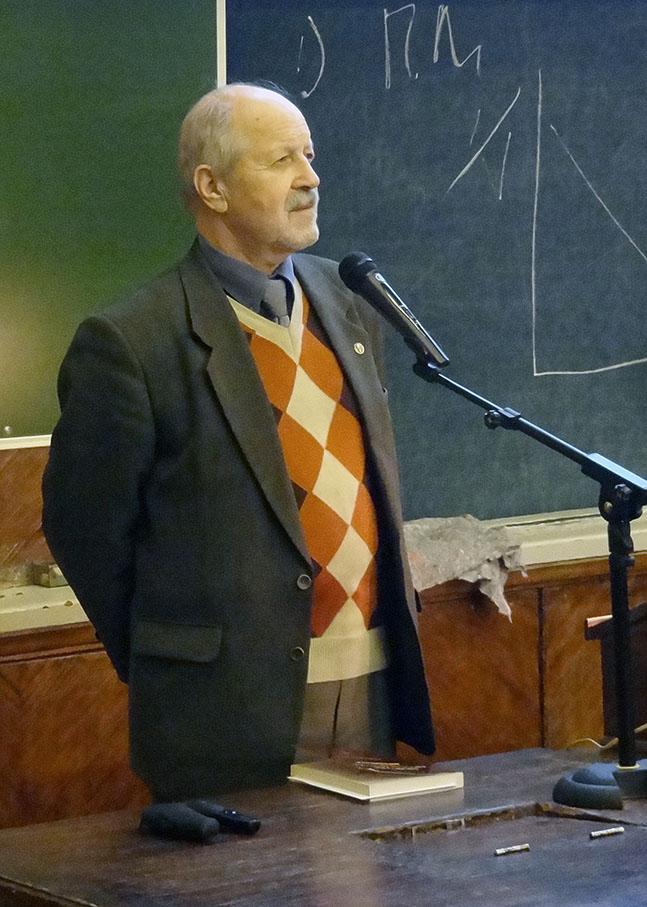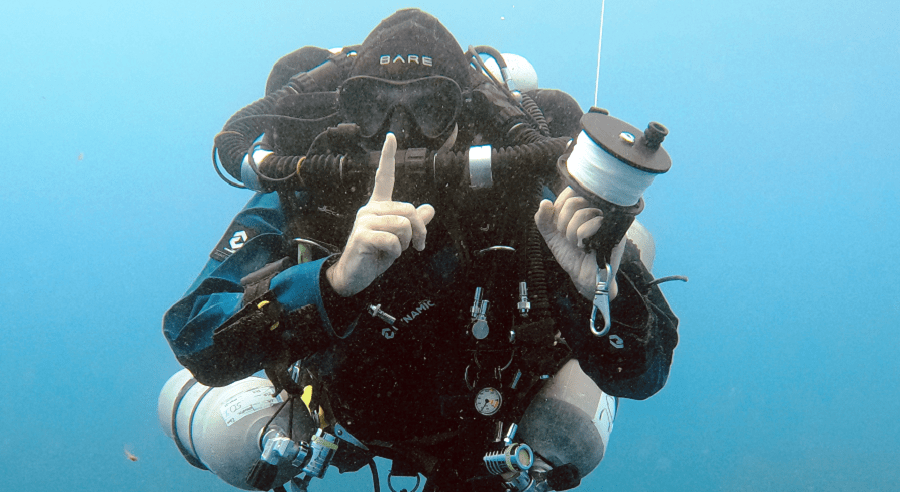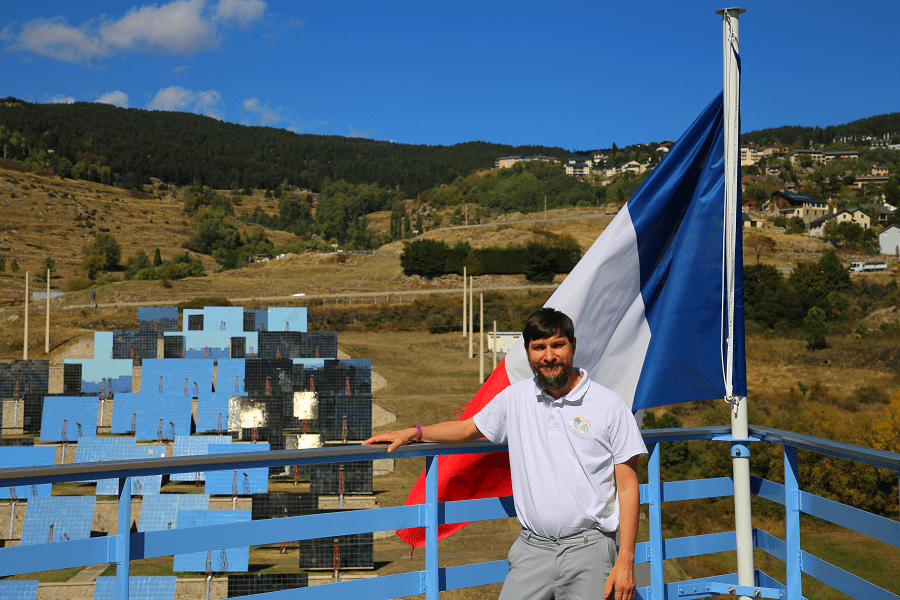Yuri Sergeevich Vladimirov – theoretical physicist, Doctor of Physical and Mathematical Sciences (1976), professor of Theoretical Physics Department of Physics Faculty, Moscow State University named after M.V. Lomonosov, and professor at the Gravity and Cosmology Institute of the Peoples’ Friendship University of Russia.
Yu. S. Vladimirov was born in Moscow in 1938. He graduated from the Moscow secondary school in 1955, entered the Physics Faculty of Moscow State University where he finished his studies in 1961 and stayed to work at the faculty in a gravitational group under the guidance of Professor D.D. Ivanenko. He has been an employee of the Faculty of Physics since then in the following positions: Junior, Senior, Leading Researcher, Professor.
Research interests are as follows: classical and quantum gravity theories, combining physical interactions of problems, multidimensional models of physical interactions, the direct interparticle interaction theory, the relationship systems theory, binary geophysics, metaphysical and philosophical problems of theoretical physics.
Vladimirov is the author of more than 30 monographs and textbooks on fundamental theoretical physics, including: “Reference systems in the theory of gravity”, “Space-time: explicit and hidden dimensions”, “Metaphysics”, “Geometrophysics”, “Foundations of Physics”, “Between Physics and Metaphysics”, “The Nature of Space-Time” and others. «Metaphysics» и «Geometry and Physics» scientific seminars have been working at the Faculty of Physics for many years under his leadership.
Yu.S. Vladimirov is the Russian Gravitational Society vice president, the Metaphysics journal editor-in-chief, Gravitation and Cosmology journal deputy editor-in-chief, the Academic Council member at the Philosophy Faculty of Moscow State University named after Lomonosov now.
What is fundamental theoretical physics?
We should distinguish three components in modern theoretical physics, which should be distinguished: proper theoretical physics, applied theoretical physics, and fundamental theoretical physics. Proper theoretical physics develops the consequences of already discovered laws (principles and equations). Applied theoretical physics discusses the application of already discovered laws to specific phenomena and devices. And the fundamental theoretical physics subject of the analysis, justification, and possible generalizations (changes) are concepts and laws used in physics.
What is characteristic of modern fundamental physics?
The development of theoretical physics throughout the twentieth century was based mainly on discoveries made in the first third of the century, that is, on the principles of relativity theory (special and general) and quantum theory. One can argue that, to date, these principles have been largely developed and conditions have arisen for a new drastic change in the physics foundations, which is the competence of fundamental theoretical physics.
A sufficient amount of ideas and experimental data has been accumulated to date for a decisive step in this field of knowledge, however, not all theoretical physicists are aware of the current situation now. Many believe that theoretical physics is developing along a single mainstream. However, it is not true. There are three development directions in modern fundamental theoretical physics (three views on the physical universe), which are naturally called the three metaphysical paradigms, which have clearly manifested themselves. These are: 1) the field-theoretical paradigm (now dominant), which is based on the field theory principles and concepts (mainly quantum theory), 2) the geometric paradigm based on the general relativity laws and its generalizations, and 3) relational paradigm, the principles of which were laid down in G. Leibniz and E. Mach works.
What determines the three paradigms presence?
The three paradigms presence is closely related to the three terms interpretation in Newton’s second law (ma = F), which are manifestations (properties) of three key physical categories: space-time (acceleration a), bodies or particles placed in space-time (mass m) and fields of particles carriers’ interactions between (force F). The physics revolution at the beginning of the 20th century was actually associated with two types of the seduction of the key physical categories number from three to two.
Thus, the creation of the general theory of relativity (Einstein general relativity) was the first step in the geometric paradigm development based on the exclusion of the field category independent nature. The gravitational field began to be interpreted as a property of curved space-time (through the metric). Electromagnetism was described in a similar way in its 5-dimensional generalization (in Kaluza’s theory). The particles (bodies) category remained unchanged. Einstein’s equations describe its properties by the energy-momentum tensor.
The two previous physical categories in quantum field theory – particles and interaction carrier fields – were combined into a new generalized category of probability amplitude field against the saved space-time category background.
However, scientists left behind the third paradigm – the relational one in the twentieth century, it excludes the independent (primary) character of the space-time category. We declare it as an abstraction from the relationship between bodies (particles) and events with their participation. This idea vivid manifestation was the discussion of G. Leibniz with Clark, a supporter of Newton’s views. To Leibniz’s question: space will remain if all the bodies are removed from it, Clark replied that it would remain, while Leibniz believed that it would lose its meaning since it is inherently a set of relations between bodies. E. Mach entrenched these views then. Ya.I. Frenkel was an active supporter of relational ideas in Russia.
What is the relational paradigm destiny?
As already mentioned, the relational paradigm left behind from the theoretical physics main development in the twentieth century, but the relational paradigm ideas were significant several times in the past century. We know that Einstein used them in creating the relativity general theory. They served R. Feynman in the development of the quantum mechanics new formulation then. However, both Einstein and Feynman had to retreat under the pressure of successes in quantum field theory. A similar situation has developed in the Frenkel views. And only so far have thoughts been increasingly expressed about the need to develop relational ideas.
Why do we need to develop the relational worldview principles?
Sweeping at the theoretical physics development in the 20th century, one can get an idea of how much effort was expended in futile attempts to solve a number of fundamentally important problems, based on the field-theoretical principles and geometric paradigm only. Such problems as divergences elimination from quantum field theory, combining the quantum field theory principles and general relativity (the gravity quantization problem), combining physical interactions are among them. We should add a number of astrophysics and cosmology problems to them. Attempts to solve them on the general relativity theory basis led to the development of a number of mythical inventions in the form of dark energy, dark matter, wormholes, and other dark inventions.
All this indicates that we have to view the existing problems of physics and, in general, of the physical universe fundamentals more widely. It seems to us that the ability to look at the world from the positions of all three of the above paradigms only allows us to create the most complete picture of physical reality and to avoid attempts to solve contrived problems.
What hindered the relational paradigm development?
The relational paradigm ideas lacked for a long time the proper mathematical apparatus, which made it possible to put relational ideas in a rather strict form. Such an apparatus has already been created in our country to date. Its beginning was laid in the works of Yu.I. Kulakov and his scientific group in Novosibirsk. Academician I.E.Tamm supported this line of research. Then this apparatus was generalized and used in the form of complex relations unary and binary systems theories to describe the physics of the microworld at Moscow State University. This approach’s main advantage is the rejection of the classical space-time a priori assignment. It is proposed to build physics on the basis of an independent system of concepts and principles.
What can give the relational approach development to the physical universe?
The analysis showed that one can significantly advance in solving a number of fundamentally important problems on the basis of the relations systems theory mathematical apparatus. Among them are justification of the elementary particles spinor structure (without involving ready-made space-time), justification of the classical space-time dimension, its signature and quadratic measure, a new look at the gravity nature, a new approach to the quantum laws interpretation, and a new look at a number of cosmology and relativistic astrophysics problems. Note that a number of these results turned out to be consonant with the ideas expressed previously by physicists and mathematicians of the past: E. Mach (Czechia), Ya.I. Frenkel (Russia), L.I. Mandelstam (Russia), D. Van Danzig (Netherlands), E. Zimmerman (USA), R. Penrose (England), P.K. Rashevsky (Russia) and other prominent thinkers.
What needs to be done to develop research in the field of fundamental theoretical physics?
The understanding of the importance of discussing and comparing various physical paradigms ideas and analyzing the consequences arising from them is gaining strength in the Russian scientific community. This is carried out at several scientific seminars at the Physics Faculty of Moscow State University named after M.V. Lomonosov, at the Peoples’ Friendship University of Russia, at the Institute of Philosophy of the Russian Academy of Sciences, and in a number of other places. It should be noted that the “Geometry and Physics” scientific seminar, regularly working (on Thursdays) at the Physics Faculty of Moscow State University, continues the centuries-old tradition of discussing the fundamental physics foundations laid down at the seminars of P. Ehrenfest and Ya.I. Frenkel and D.D.Ivanenko.
A special metaphysics scientific journal was created to consider the ideas advanced and the discussions held. In addition, materials on this issue are published in the “Space, Time, and Fundamental Interactions” journal, as well as in the “Gravitation and Cosmology” journal, a Russian Gravity Society organ. Two Russian conferences on the fundamental physics and mathematics foundations have been held recently (in 2017 and 2018) on this issue in our country (on the basis of PFUR). A third such conference is being prepared at the end of this year.
It should be emphasized that similar processes occur in modern mathematics, where you can also clearly trace the paradigm shift trend.
All of the above indicates that the time has ripened for the creation of a special social structure such as “a scientific school on the fundamental physics and mathematics foundations.” Preparations are underway currently to form such a school.
Interview: Ivan Stepanyan











